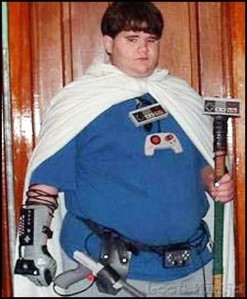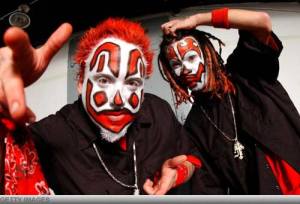
Shutting out the Sun – How Japan Created its own Lost Generation by Michael Zielenziger
One of the things you learn about Japan when you get here – and you learn it pretty quickly – is that there can be a vast difference between the appearance of Japan and the reality of it. The faces that people show you, or even that the city shows you, is not necessarily their true face.
Take Kyoto as an example: it prides itself on being a city of traditional culture, the touchstone of all that is Truly Japanese. When you first see it, though, you think, “Really? Because it looks like a big ol’ jumbled-up city to me.” And it does – aside from the temples, which remain more or less relegated to the edges of the city, the vestiges of Old Japan have been swept away in favor of concrete and glass. Kyoto Station is a glimmering lump in the middle of the city, and Kyoto Tower, as many have said, is a stake through its heart. But ask anyone and we’ll say, “Kyoto is a beautiful city.” Because that’s the way it’s supposed to be.
This is how it is to live in Japan. There is a gulf between the true nature of things and the way we want them to be. For someone born and raised here, this kind of thinking is taught from birth, and without the ability to divide oneself in twain, life in Japanese society can be very difficult. These two states have names, too – tatemae is the face that you present to the world, the one that everyone expects of you. Honne is your “true self,” the feelings and thoughts that you hold in reserve so as not to cause conflict with the greater society around you.
The origins of this dichotomy are unclear, although there are those who attribute it to a culture with roots in collective agriculture. If your life and the lives of everyone in your village depends on getting the rice crop in, you have to learn to hold back certain feelings or desires for the good of the group. You sublimate yourself into the group structure, because that’s what has to be done. So, tatemae isn’t a lie, or a deliberate performance designed to deceive people. It’s a bargain between oneself and society – “This is what society needs me to be? Fine. I can be that.” What remains is honne, the inner self that society cannot touch, but can never see.
So what happens when someone can’t hold up their end of this social contract? What happens when the modern world makes demands of people that this ancient compact can’t handle? Well, that’s when things start to go wrong….
For many years, this bargain between the individual and society worked, mainly because society kept up its end of the deal. People were protected, employed, and given a place in the world, whether it was the feudal culture of the Edo era, the wartime mobilization of the 30s and 40s, or the indomitable Japan Inc. of the post-war years. As the world progressed, however, it soon became evident that the old ways weren’t enough. Japan needed to change, or face stagnation and irrelevance.
In this book, Zielenziger tries to figure out how Japan got into the state it’s in – a decade and a half of stagnation, with no end in sight, and the very real possibility of a slide into graying irrelevance by the middle of the century. To do so, he looks first on the human scale, at the people who have given up on Japan’s social contract – the hikkikomori.
Like so many other things Japanese, the hikkikomori phenomenon is said to be unique to Japan. Not quite agoraphobics, not quite dropouts or depressives, the hikkikomori are people – usually men – who have given up on the world. They usually live in a single room, often in the homes of parents who enable their hermit lifestyle, and refuse to come out. They sit in there and read, or watch TV, or think. They see no place for themselves in the outside world, and so they give up on it. The men that Zielenziger interviewed suggested that the outside world was too much for them. In many cases they were bullied by others – a pattern of social control that is unfortunately ingrained here – or they simply looked at their parents and thought, “Is this what I will become?”
An American child, faced with the knowledge that he doesn’t fit with the rest of the world, will probably see it as an opportunity to shape his own identity. A hikkikomori sees it as a personal failure. He knows how Japanese society works, and rather than blame the world for not accepting him, he blames himself for not being able to fit in. Thus, retiring from the world is seen as the only option available, other than suicide. Some hikkikomori spend years in their rooms, refusing to speak even with their parents, who – often out of a sense of shame or the nurturing love known as amae – support their boys’ choice of lifestyle.
At the other end are the people who give their identity over to an outside source. In more dangerous cases, this outside source might be a cult, like the Aum Shinrinkyo group who carried out the deadly sarin attack against the Tokyo subway in 1995. A more benign manifestation, however, is brand mania. Zielenziger talks to women who identify themselves through the brands they buy. These people will spend money they don’t have in order to get a bag from Louis Vuitton or Gucci or Chanel. They distinguish themselves with their brand identity, willingly giving up their own in the process. In a country where one can no longer trust the government to look after your best interests, or the media to tell you the truth, or business to give you a job, putting all your faith in Louis Vuitton – with its worldwide reputation for quality – seems to be a good idea.
It’s a nation in crisis, according to Zielenziger. It’s a country that’s gone from feudalism to full modernity in only a century and a half, but the culture hasn’t changed nearly as much as the country has. It’s a bustling, 21st-century nation built on a foundation that was laid in the 17th century, and things are starting to fall apart. It’s a country that puts society before the individual, but that premise is cracking under the weight of a world that values individuality. It’s a place where responsibility is distributed and accountability doesn’t exist, where mistakes go unexamined lest they bring shame upon those who made them, and where the past is a thing that can be easily ignored if it troubles you. Zielenziger believes that the underlying social structure of Japan is holding it back, leading the entire country to another withdrawal from the world. Much like the hikkikomori that no one likes to talk about, Japan may one day find itself alone and isolated, not knowing its place in the world and not knowing how it can get back to what it used to be.
The book is quite a read, going from small one-on-one interviews to historical and sociological analyses, but it is overwhelmingly negative in tone. Zielenziger isn’t wrong, necessarily, but he is of the mind-set that Japan is irrevocably screwed and that only Western cultural intervention can save it.
He lays the hikkikomori problem – and the problem of parasite singles, NEETs, and all the other dysfunctional youth – at the foot of Japan’s collectivist culture, as well as the intense bond of amae that exists between the parent and child. While he doesn’t say it in so many words, he does imply that the traditional social structure of Japan is simply incapable of keeping Japan competitive in the modern era. He believes that Western values, especially those stemming from Christianity, are what Japan needs to survive.
The bit about Christianity seemed to come from left field, but he does make a case for it. Christianity, he believes, places the onus of salvation on the individual. It is a person’s works (or faith) that ensure his place in the afterlife. This focus on one’s personal responsibility, and ultimate judgment, fosters a Self that is harder to suppress. From that strong sense of individuality, a culture can foster more competition, thereby preventing stagnation.
There’s a long, not entirely interesting chapter on Korea that he uses to illustrate this point. Unlike Japan, Korea – once called “The Hermit Kingdom” – found itself facing economic turmoil and got themselves out of it. Not because Korean ways were better, but because they knew that if they stuck to their traditions they’d be screwed. Korea is a nation strongly influenced by Christianity, and the individuality that Christianity fosters, suggests Zielenziger, is what gave Korea the courage to risk social turmoil for the betterment of their nation.
There may be something to this, but I doubt that adopting Christianity en masse will save Japan from Zielenziger’s dire future. Honestly, it was tough to stay objective while reading this, mainly because of the gulf between what I see, having lived here for the better part of a decade, and how Zielenziger describes the place. If I didn’t know better, I would have read this and thought that Japan was a zombie nation, populated either by hermits or soulless consumers. From what I’ve seen, I know that this is not the case.
Granted, I haven’t completely immersed myself in the culture, mainly because that’s an extremely difficult thing for a non-Japanese to do. Most of the people I talk to are my students, and people with the desire and the resources to study English are probably not an accurate cross-section of the country. So I don’t claim to have any more insight into the Japanese mind than Mr. Zielenziger does, but from my experience it seems that all hope is not lost. Yes, the government is a faceless bureaucracy, the media is completely complacent and the corporate community that once offered jobs for life has vanished. But Japan has proved resilient in the past, adapting to great changes that were thrust upon it from the outside. And a quick look at Japanese history shows that, when the times need it, people emerge to challenge the established order.
That’s what Japan needs now. Someone – or, more effectively, a group of someones – to stand up, stick out and risk themselves for the betterment of their country. It won’t be easy – revolution never is – but it needs to be done. Perhaps one day, instead of shutting themselves in their rooms, there might be young men and women who take to the streets and show Japan that there is value in the individual. I hope I get to see it.
————————————–
“To survive in Japan, you have to kill off your own original voice.”
Kaz Ueyama, Shutting Out the Sun
————————————–
Michael Zielenziger on Wikipedia
Michael Zielenziger’s Homepage
Shutting Out the Sun on Amazon.com
Hikkikomori at Wikipedia
Amae at Wikipedia
 Sourcery by Terry Pratchett
Sourcery by Terry Pratchett

























